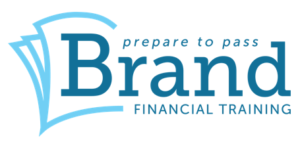The Brand Financial Training team consider the use of a loan trust scheme and a discounted gift trust in conjunction with life insurance bonds when inheritnce tax planning
Life insurance investment bonds have long been used with trusts as solutions for clients when planning for the mitigation of inheritance tax.
Loan Trust Scheme
The benefit of using a loan trust scheme is that the investor has access to their original investment whilst achieving a long term inheritance tax benefit.
Firstly the settlor sets up a discretionary trust and appoints trustees. They then make an interest-free loan to the trustees who invest this into an investment bond (although it could also be a collective investment such as a unit trust or OEIC). Because the initial transfer is a loan, and not a gift, there is no transfer of value for IHT purposes.
The trustees then use the 5% withdrawal facility to pay back the original loan to the settlor, thereby creating a tax efficient ‘income’ for them. More than 5% could be taken from the bond but this may lead to income tax complications for the settlor as taking more than 5% would be a chargeable event.
The initial loan is repayable on demand so the settlor has the peace of mind that should they need the capital back, they can ask the trustees to repay any outstanding loan and the trustees must comply.
The investment bond is held within the trust so any growth is outside the settlor’s estate and is held for the ultimate beneficiaries. If at the point of the settlor’s death there is an outstanding loan amount, this will be repaid and will then form part of the settlor’s estate for IHT purposes.
While a discretionay trust is generally used, loan repayments do not incur an IHT exit charge and at the point of the 10 year periodic charge any outstanding loan is deducted from the value of the trust at that point.
In summary, the loan trust is a long-term IHT planning scheme providing an ‘income’ to the settlor as well as easy access to their capital. The maximum IHT benefit comes after the loan has been fully repaid which will be after 20 years if 5% has been repaid annually. However, once the loan has been repaid the settlor has no further access to the trust fund.
Discounted Gift Trust (DGT)
A DGT is also a very useful IHT planning tool for those who have an IHT problem but would like to receive a fixed ‘income’ from their gifted capital.
A DGT also uses an investment bond which is held in a trust. The trust can either be a discretionary trust (where the trustees have flexibility over the choice of beneficiary) or a bare trust (where they don’t). In this article we assume a discretionary trust is used.
The trustees hold onto the investment bond as a trust asset for the ultimate benefit of the beneficiaries but in the meantime the settlor has the right to receive a fixed ‘income’ for life; they do not however have any right to the capital.
Because the settlor is entitled to ‘income’ the value of the transfer into the trust is discounted for IHT purposes. If death occurs within 7 years of the DGT being set up, it is the discounted amount that is included in the estate. There is therefore an immediate IHT reduction with the discount based on the value of the regular payments and the health and age of the applicant. The longer the settlor is expected to live, the larger the discount will be. Once 7 years have gone by the gift becomes an exempt transfer and is outside of the estate anyway.
If a discretionary trust is used then the initial transfer will be treated as a chargeable lifetime transfer for IHT purposes but as long as this is under the nil rate band then the 20% entry charge will not apply (assuming no previous gifts were made).
The ‘income’ is provided once again by the trustees using the 5% withdrawal facility and paying this to the settlor. Remember that the growth on the bond is for the ultimate benefit of the beneficiaries.
If a discretionary trust is used the value of the settlor’s remaining income rights are deducted from the trust fund to calculate any 10 year periodic charge. Exit charges also do not apply to payments made to the settlor.
To summarise, a DGT is suitable for those people in good health (to secure a good discount) who want to make a gift of assets to reduce IHT (with some immediate effect) but who also wish to receive regular fixed payments from the gifted capital (albeit usually capped at 5%).
The drawbacks are that although the payments are intended to last a lifetime, in reality the funds could run out before the settlor dies or may become chargeable after 20 years of having received the regular 5% amount.
To be effective for IHT purposes remember the payments from both a loan trust scheme and a discounted gift trust must be spent by the settlor rather than accumulated in an account!
This article was first published in the April 2022 issue of Professional Paraplanner.
[Main image: annie-spratt-lU4TuhmIKs4-unsplash]
About Brand Financial Training
Brand Financial Training provides a variety of immediately accessible free and paid learning resources to help candidates pass their CII exams. Their resource range ensures there is something that suits every style of learning including mock papers, calculation workbooks, videos, audio masterclasses, study notes and more. Visit Brand Financial Training at https://brandft.co.uk





























